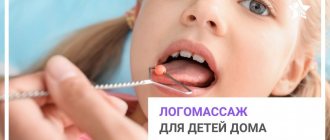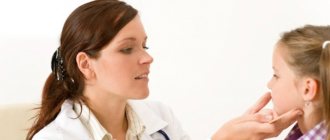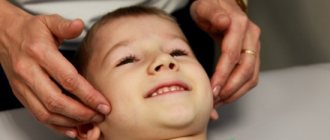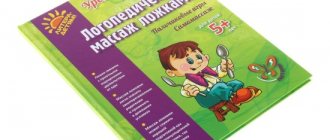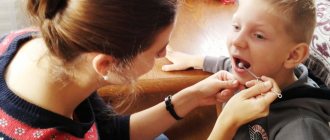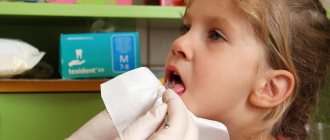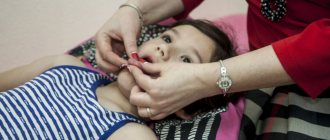Speech therapy massage is one of the main elements of the rehabilitation program for patients suffering from dysarthria. Rehabilitologists at the Yusupov Hospital use various types of massage for dysarthria: probe, acupressure, facial muscles, tongue. Depending on the type and degree of dysfunction of the articulatory and facial muscles, specialists select one or another type of influence.
The program of speech therapy massage for dysarthria in patients in the acute phase of stroke, traumatic brain injury, and demyelinating diseases of the nervous system is discussed at a meeting of the Expert Council, in which doctors and candidates of medical sciences, doctors of the highest category take part. The medical staff is attentive to the problems of patients with speech impairment.
Types of tongue massage?
Tongue massage can be done manually. Manual speech therapy massage is performed by a speech therapist using the fingertips. Manual speech therapy massage is both an independent stage of tongue massage and can be a preparatory stage for the second type of speech therapy massage - probe massage of the tongue.
The second type of speech therapy massage is probe massage. Probe speech therapy massage is performed with special speech therapy probes. Speech therapy probes are special “sticks” that have different shapes to influence different structures of the oral cavity. Speech therapy probe massage is deeper than manual tongue massage. In some cases, a specialist may replace the probe with a toothbrush or other device. The main thing is that the specialist clearly understands what he wants to achieve!
What techniques are used to provide speech therapy assistance?
Speech and speech therapists use a variety of techniques, including:
Language intervention activities: The specialist will interact with the child through play and conversation, using pictures, books, objects or games to stimulate language development. The speech therapist helps model correct vocabulary and grammar using repetition exercises to develop language skills.
Who does tongue massage? Who has special knowledge for this?
Despite the fact that the word massage implies the participation of a massage therapist in the process, in the case of speech therapy massage this is not the case! Speech therapists provide speech therapy massage! But not all speech therapists are ready and able to perform massage. Typically, a speech therapist who has gained experience and understands that many problems cannot be solved without speech therapy massage receives additional education on the topic of “speech therapy massage.” After training and receiving a special document, a speech therapist is considered a tongue massage specialist.
It should be added that you can do tongue massage yourself, for example, when a mother does basic techniques to her child. But all the same, it is better to entrust the appointment of massage and control over its effectiveness to an experienced speech therapist-myofunctional therapist! What distinguishes a simple speech therapist from a speech therapist-myofunctional therapist is that the latter understands in more detail and is able to work with the muscles of the articulatory apparatus and masticatory organ.
When is it appointed?
The procedure is prescribed in accordance with the doctor’s prescription after a thorough examination, establishing the presence of neurological symptoms in the facial muscles, with the manifestation of neurological pathologies:
- violation of the tone of articulatory muscles;
- stuttering, sound production defects;
- voice defects;
- impaired salivation;
- making one of the diagnoses - dyslalia, dysarthria, delayed speech or mental development.
Facial massage, when properly prescribed and carried out, gives positive treatment results if standard pedagogical techniques do not help.
Restrictions and inadmissibility of use:
If it is necessary to prescribe a procedure, factors contraindicated for use should be taken into account:
- infectious, somatic diseases, inflammatory processes;
- skin diseases in a child or speech therapist;
- viral diseases of the oral mucosa;
- infectious wounds;
- enlarged lymph nodes;
- cancer;
- conjunctivitis;
- furunculosis;
- episyndrome;
- increased sensitivity.
Before scheduling a session, you must have a pediatrician and neurologist’s opinion on the absence of contraindications.
How is tongue massage done?
Tongue massage is carried out in a special speech therapy room. For example, a speech therapist’s office at a Family Dental Clinic looks like this:
Speech therapy massage is carried out in a relaxed state for the patient. This is usually lying down, reclining or sitting. If a tongue massage is performed on a small child, then the child sits on the mother’s lap. A tongue massage takes about 15 minutes. It is usually perceived positively by patients because it does not cause negative or painful conditions. The specialist performs a tongue massage wearing special disposable gloves. Massage probes are sterilized after each patient! This is an advantageous difference between medical and other organizations where tongue massage can be performed, for example, kindergarten, etc. In institutions of this type, such as kindergartens, speech therapists are not provided with either gloves or sterilizers. Therefore, they massage with bare hands and wipe the probes with alcohol. This, from our point of view, is not enough to ensure patient safety!
Execution Rules
The use of therapy must meet the following conditions to prevent negative effects on the baby’s body:
- the presence of a clean, warm, ventilated room, the absence of strong odors, distracting sounds, or too bright lighting;
- Carrying out the procedure at least two hours after eating (the oral cavity must be cleaned);
- absence of pain during the session (unpleasant sensations arise often; to eliminate them, the child is mentally prepared in advance, distracted during the session, for example, with poetry, or shown exercises on another patient);
- gradual increase in the duration of the procedure (from 5 minutes at first to 25 minutes);
- differentiation of session duration based on age (maximum 10-12 minutes for infants, 15 minutes for preschool children, 25 minutes for primary school children);
- cyclicality, regularity of procedures (as a rule, a cycle is 10-20 procedures, with a frequency of about three times a week, with a pause between cycles of up to two months);
- ease, accuracy of execution (the baby’s facial muscles are not strong enough, so the pressure force should be low).
Before conducting a relaxation session, it is essential to achieve a relaxed state in the muscles of the upper shoulder girdle and neck. Such exercises include movements of the child’s head clockwise and counterclockwise, measured turns of the head forward, to the sides, and stroking. The exercises are easy and do not stretch the skin.
The subsequent set of exercises includes a stroking effect on the child’s facial muscles, after which a lip massage is performed, including elements of stroking, tapping, and rotational movements.
Stimulating massage is distinguished by greater pressure and quick movements, but should not be painful. The set of exercises includes stroking, pinching, pressing, tapping, rubbing, squeezing, kneading the muscles of the face and lips. A special stimulating technique is vibration: manual or using an appropriate device, which causes strong contractile actions of the muscles, increasing their elasticity.
Who is tongue massage recommended for?
Tongue massage can be both stimulating and relaxing. And also combined, when one area of the tongue needs to be relaxed and the other stimulated! This is where the indications for tongue massage come from. Speech therapy massage is indicated for patients:
- with speech impairments;
- disorders of chewing and swallowing function;
- with malocclusion;
- undergoing orthodontic treatment (bite correction and teeth straightening);
- undergoing orthopedic treatment (dental prosthetics);
- with a short frenulum of the tongue for the purpose of non-surgical stretching;
- with hypertonicity of the tongue and masticatory muscles (bruxists and claunchers - people who clench and grind their teeth);
- with increased stress on the speech apparatus (teachers, lecturers, etc.).
Pre-warm-up
You need to start the session with a general facial massage for a few minutes. You need to perform pleasant stroking and vibrating manipulations for the baby. Directions may be different:
- The forehead is massaged from bottom to top and from the center to the temples.
- The lower eyelid needs to be worked from the outer edge to the inner, the upper - vice versa.
- Movements are performed from the nose to the temples and from the edges of the lips to the ears.
- Manipulations are also done from the chin to the earlobes.
To relax the muscles of the neck and root of the tongue, the baby's head sways and smoothly turns to the sides. Then the work on the tongue and lips begins.
Speech therapy massage and dentistry! What's the connection? And what do we use in Dial-Dent?
People with malocclusion and uneven teeth almost always have improper and unbalanced functioning of the muscles of the tongue, lips, chewing muscles and other muscles of the masticatory organ. Moreover, the modern concept of the causes of the formation of bite defects suggests that most dental defects are caused by improperly working muscles. Incorrect speech, improper functioning of the tongue when swallowing and chewing, asymmetrical pressure of the tongue - all this leads to the fact that the teeth can move in different directions under certain conditions. This is how a deformation of the bite occurs, which is more pronounced the more incorrectly the tongue and other muscles work.
Most orthodontists, without delving into the work of muscles and without consulting with speech therapists, install braces or aligners and straighten the teeth without taking into account the condition of the muscles. This approach is outdated and almost always leads to relapse, when the teeth become crooked again some time after treatment. Knowing this, older orthodontists force their patients to wear retainers. Retainers are structures that keep teeth aligned. This could be a wire glued to the teeth or a plastic mouthguard to wear at night.
At Dial-Dent, we always take into account the muscular cause of malocclusion. The participation of a speech therapist in the diagnosis and in the process of straightening teeth makes it possible to remove or correct the myofunctional causes of deformities. This interdisciplinary approach is more modern and gives the best and most stable treatment results! After treatment, relapses do not occur because muscle balances are leveled. Accordingly, the orthodontic treatment itself occurs faster and without problems with the participation of a speech therapist-myofunctional therapist.
Types of speech disorders and speech disorders in children
The most well-known speech disorder is stuttering, in which the natural flow of speech is interrupted by abnormal stops, or repetition of parts of words or sounds. Problems with speech disorders currently occur in almost every fourth child. Speech disorders negatively affect the development of a child’s attention, memory, imagination, thinking, and written language. Voice disorders, which include problems with rhythm, volume, or quality of voice, are also common. Associated with speech disorders in children are problems with chewing and swallowing.
Regular sessions with a children's speech therapist most often allow you to successfully correct speech problems that have arisen. It is necessary to contact a specialist immediately when relevant problems are detected in a child, so that distorted skills do not have time to take hold and form a stable functional system.
Timely correction of speech disorders plays a big role in the child’s overall mental development, the formation of correct communication skills with people around him and healthy self-esteem.
Cost of tongue massage at Dial-Dent. Specialist in speech therapy massage.
At the Family Dental Tongue Massage or speech therapy massage, speech therapist-myofunctional therapist Tatyana Borisovna Tsukor is engaged. Graduated from Moscow Pedagogical State University. Lenin. Work experience more than 15 years. Speech therapist teacher of the highest qualification category. Laureate of the competitions “Heart given to children 2008” and “Heart given to children 2010”.
The cost of a session with a speech therapist is 3,500 rubles. The duration of the session is from 30 minutes to 50 minutes depending on the task and the age of the patient. If necessary, the session also includes speech therapy massage.
Being a unique speech therapist who has been collaborating with dentists for a long time and successfully, Tsukor T.B. conducts training courses for both orthodontists and speech therapists. The course covers all aspects of speech therapy massage. Of course, every orthodontist should know about the capabilities of such a powerful tool as speech therapy massage. Training is carried out both as part of presentations at congresses, and individually or in small groups.
Our speech therapist also conducts classes via Skype. The cost of such a lesson is 2500 rubles. As you understand, speech therapy massage cannot be done via Skype, so if you need a massage, you will still have to come to Dial-Dent.
You can make an appointment with the Family Dental speech therapist Tatyana Borisovna Tsukor by calling the clinic +7-499-110-18-01 or using the form on the website. You can ask questions about speech therapy, as well as massage training, to T.B. Zukor on her page in.
Efficiency
The results of using the technique can please parents; the procedure eliminates deviations in the pronunciation of sounds, has a positive effect on the nervous and muscle muscles, and improves the function of the blood vessels of the baby’s face. The technique is available to those who wish, and, importantly, does not use drugs.
In this case, individual characteristics should be taken into account; not all speech defects are fully eliminated by this method; massage does not exclude other corrective measures. Only the joint work of a speech therapist and parents, provided that classes are regular, can bring the expected results.
Conditions for holding
Speech therapy massage for children, as a rule, begins at the age of 4–5 years. According to indications, the course can be started earlier.
You need to create favorable conditions at home so that the sessions do not bring discomfort. The room should be quiet, warm and light. The massager's hands should be warm and clean. Make sure there are no scratches, inflammation, or foreign odors on your hand—perfume, aromatic oils, creams. Remove all jewelry. It is also necessary that the child is disposed to treatment and treats it calmly. It is unacceptable for the baby to cry and struggle.
The first speech therapy massage procedure for children can be short - no more than 5 minutes, especially if this is the first time for him. Then gradually increase the duration: after a week you can practice for 20–30 minutes. Focus on the age and reaction of the baby: if he becomes uncomfortable, uncomfortable, fear or nervous tension appears, it is better to interrupt the session. If you continue, despite the protest, next time he may refuse treatment altogether.
For good results, you need to practice regularly. Optimally 2 – 3 procedures per week. If you combine them with articulatory gymnastics and other activities, you will see the effect faster. Try not to take long breaks between sessions.
On average, a full course requires 10–20 sessions, sometimes more.
For massage you need to prepare a special oil or cream. Be sure to check for tolerance: apply a small amount of the product to the skin of your forearm and evaluate the reaction.
After treatment, wash your baby's face and rinse his mouth.
Important rules of logomassage
Articulation massage for dysarthria is undoubtedly an effective method of correction. To benefit and avoid complications, the following conditions must be met:
- All stages of treatment are controlled by a speech therapist: drug treatment, physiotherapy, massage. Therefore, choosing a specialist is one of the fundamental moments in therapy;
- In addition to professional qualities, it is important to establish emotional contact between the speech therapist and the child. This means that a specialist must be able to find a common language with children of different ages. If the child behaves awkwardly and starts throwing tantrums during sessions, there will be no benefit from such procedures, no matter what credentials the speech therapist has;
- The room in which a relaxing massage for dysarthria is performed should be comfortable. It is necessary to ventilate it, remove distracting objects;
- It is better to do the procedures while lying down. But if the child is so uncomfortable, he can sit down;
- The child should be in a good mood, well-fed and happy. Treatment cannot be carried out when he is tired, emotionally overworked or sick. During the massage he should not experience discomfort or pain;
- Your mood is also important. If you are excited and nervous, the baby will feel it and will also begin to worry;
- If you use a spoon or brush, purchase them specifically for massage;
- The sooner you start therapy, the faster you will get results. Therefore, pay attention to the child’s speech, especially if he is at risk: your pregnancy and childbirth were difficult, you were sick during pregnancy, the child had a traumatic brain injury, he was seriously ill for a long time, you have close relatives with speech problems. disorders. The first “bells” are limited mobility of the lips, palate, tongue, difficulties with sucking and swallowing food. Nasal and slurred speech when the child begins to talk. If you notice these symptoms, consult your doctor;
- The procedures will be effective only with an integrated approach. This means that at the same time lessons are held with a speech therapist on sound production, breathing exercises, and the development of fine motor skills.
Be patient. Lead a normal life: let your baby feel that he is no different from the rest, that he is also loved and appreciated. This is an important point that will undoubtedly help him cope with his problems.

